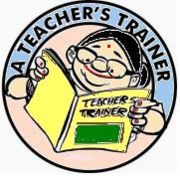LECTURE
ABOUT LECTURE
|
After reading this material and performing the activities, you will: o Become aware of different ways in which information can be transferred in a training session. o Be able to plan your own sessions in a more ordered manner o Introduce variety into your training sessions. |
WHY LECTURE IS POPULAR AMONG TRAINERS?
A lecture is the most familiar and popular form of classroom transaction at higher levels of education/training. Let’s consider why a lecture method is so popular. Here are a few advantages you may wish to consider.
It does not require extensive human resources. One lecturer can lecture to a large group. On the other hand, group work requires a large number of trainers/resource persons.
Provided there is adequate accommodation, it is administratively easy to arrange a lecture.
It is economical in terms of materail,space , man power and time.
The minimum that is required is:
Adequate number of chairs/seats/a carpet/mat
Lecturer’s table or lecture
A public address system if the group is large.
Adults do not necessarily appreciate a lesson approach, especially if the style adopted is based on school practice. A lecture method is therefore a, safe’ method.
The lecture mode, how- ever, has certain disadvantages
There is little scope for getting feedback
Sustaining audience attention is difficult and requires a high degree of skill. A lecture, that is basically “A straight talk or exposition, possibly using visual or other aids, but without group participation other than through questions at the conclusion” can however be made more interactive and interesting.
Here are a few ways of making a lecture interesting
- Maximize the human contact aspect. This can be done by maintaining eye contact. That is, don’t lecture to the ceiling or some point in space above the heads of the audience.
- Talk to the audience, take them into your confidence. Do not talk down to them as if you were superior to them.
- Introduce variations. A few simple techniques are mentioned below.
- The audience, during a lecture, often wants to take notes. Tell your audience you will indicate when during your lecture they can take notes. (you will know what are the important part of your lectures are) At other times, the audience listens.
- Introduce worksheets that check audience understanding up to that point. This in especially relevant for content areas like grammar or mathematics.
- You could also pause in your lecture and ask questions about the topic of your lecture/what you have said sofar. This is called the ‘quiz method.
- Punctuate your lecture with audio-visual materials. This could be tapes, charts, OHP, Video etc. It can be quite difficult to listen to a lecture without a break/ change for 40 min. or more.
- You could try and introduce interactive tasks where the audience talk to each other in pairs/small groups on an issue/point you have raised in your lecture. When the audience reports back, you will get feed back about your lecture, the points you have raised there as well as how the audience is thinking.
Given below are some points that relate to lecturing.
• Be thorough about the topic you are lecturing on.
• A lecture with a superficial knowledge of the topic can be spotted quickly, and the audience often feels cheated.
• Make notes of all important points. You need not write out the whole lecture, only the very important points.
• Professional lecturers use ruled cards, about 14 cms X 8 cms, to make notes. These cards are easy to handle and use and you don’t need more than 5 to 6 cards per lecture of 45-60 minutes duration.
• It is a very good idea to sequence your ideas in a way that is most effective. Your notes should reflect this sequence.
• While preparing your notes, build in proper examples too. An example should help the trainee understand the concept/idea you are trying to put across. Inappropriate examples often confuse and mislead trainees.
• Decide on the type of language you will use while lecturing. It is always advisable to use simple, clear language. The vocabulary should be appropriate to the topic.
• A good idea is to use linkers, i.e. words like therefore, so, because, however, first, next, finally, but, though. These linkers help listeners to follow the development of your ideas in the lecture.
• A technique some lectures use to prepare for a lecture is to make a list of all possible questions they can think of about the topic. It is a type of ‘personal’ brainstorming. This technique helps a lecturer to be prepared to answer and tackle all points related to the topic.
• Content sequencing may change according to the type of objectives, group,time avilable and back ground of audience.It can be simple narration, question answer basd chian,thought provoking refelctive presetation,logical deduction, and many more.
|
Here are some questions about Dictation that a lecturer can ask himself before preparing for the lecture |
Who dictates?
Should we dictate words/sentences at the primary level?
How should the words/passages be read? At what speed?
Another technique is to listing out all possible elements and then selecting the most important/relevant ones for the lecture. The choice of elements will depend on the level of the audience, the type of audience, the purpose of the lecture and the time available.
The lecturer decides on all items that could be included in the lecture. S/he reduces these to those elements that should find a place in the lecture. These should are further reduced to elements that must be included in the lecture.
Some lectures prefer to use a more formal format for lecture notes. The aim of using this is to make it available to others if required.
A sample format is given below
|
Below given is a suggested lecture plan. Reflect whether you agree with its components. If not what kind of chages would you like to bring to this plan THE LECTURE PLAN Name of Trainer : .......................................................................................... Subject : .......................................................................................................... Location : .......................................... Time available ................................. Aids reqired : ................................................................................................. Size of group : ............................................................................................. Objective : .................................................................................................... Feed back : .................................................................................................... TIME CONTENT AIDS |
Preparing for a Lecture
An effective trainer prepares his/her lecture carefully. As students/trainee’s, You most probably very quickly spotted a lecture who had nor prepared his/her lecture as gainst one who had made careful preparation.
Physical Aspects
Two physical aspect that influence the effectiveness of a lecture are
- The lecturer’s voice
- Body language.
Voice
The skills involved in using the voice effectively are:
- Voice modulation or controlling the variations of volume, tone and pitch. Actors and actresses get special training in voice modulation, but this skill can help lecturers too to make their lectures interesting.
- A lecture delivered with the same volume, pitch and tone tires listeners, and they tend to stop paying attention after time.
- Voice projection or the ability to throw one’s voice. This is an especially useful skill for a lecturer who has to address a large group.
- Volume modulation to suit the audience size. A trainer should be able to in crease/decrease the volume of his/her voice according to the size of audience.
- Pauses a pause used at the right place can be very effective. An effective trainer, knows where to pause and for how long. A pause can also get back the wandering attention of the audience.
Body language
The use of body language emphasizes and aids communication. The use of your hands, body movement, gestures and posture communicate non-verbally your mood, interest-level, involvement, attitude etc, to the audience. Using body language appropriate to the context and situation can aid communication. One should be careful in using body language. It can confuse the audience if your verbal message and body language contradict each other.
|
Imagine that you have to give a lecture on word processors. Complete the mind map including all possible points. Then reduce these to the points you will actually use in the lecture. Say who your audience are, their level, and the time available. Write out at least one objective for the lecture.
|
|
Please go through this material on presentation skills to get a better idea of the skill [[1]]Use of AV Aids |


